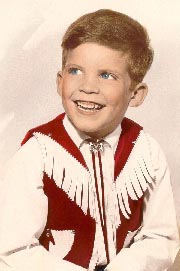
We're almost to the end of my continued celebration of my 2nd banjoversary. Today I'm continuing my discussion of my next year's plans by thinking through the second of my three new plans for the next year: "I will create a terrific banjo practice area."
I'm drawing a lot of this idea from the sessions at Midwest Banjo Camp.

Janet Beazley had this advice in her "Productive Practice Tools and Tips" session...
Set a locale — a room or corner of a room that stays set up for practicing and nothing else

From James McKinney, who taught the "Developing Speed" session at camp, comes a very good point that I hadn't considered before but which really struck home when I heard it:
The importance of privacy
One of many players’ greatest mental barriers to getting quality practice is the fear of annoying others with my endless repetition of scales, arpeggios and other technical exercises. I have found that the ONLY way for many people to do any extended practice is to ensure that they have complete privacy so that nobody will hear them. Even if the others in your surroundings repeatedly assure you that they don’t mind hearing me practice, it still bothers you. You just can’t relax if someone is listening.
If you also feel inhibited by people listening to you practice, you owe it to yourself to arrange a private space for yourself where you can tap, pluck and roll to your heart’s content without feeling as if you are annoying others.
Which brings me to: "I will create a terrific banjo practice area."
And I shall call my practice area...the Fortress of Banjotude.
The Fortress will have:
- Banjo that remains in the Fortress permanently
- Guitar so I can continue to learn guitar chords, which helps me follow the guitarist at jams
- Instrument stand that will hold both my banjo and the guitar
- Music stand
- Sound control
- Enough distance that I don't worry about how loud I am
- A pad on the floor so I can tap (stomp, even) my foot without bugging people
- Sound-dampening barriers (maybe; that's kind of tricky and expensive)
- Banjo mute
- Guitar mute
- Headphones
- Mirror so I can watch my hands
- Computer with
- Internet access
- TablEdit
- CD/DVD drive
- Speakers
- Video camera on a tripod, connected to the computer
- Printer/Scanner/Copier with spare print cartridges and paper
- Chair
- Enough space that I can
- stand up while playing
- have guests play with me
- Shelf for all of my music books
- Wall space for posters, stickers and other souvenirs
- Spare strings
- Mechanical pencil and spare lead
- Metronome - a good, loud one
- Capo
- Electronic tuner
- Timer that's easy to ready and which will alert me when certain amounts of time have passed
- Waste basket and recycle bin
- Battery charger
Coming up: The last stop on the 2nd banjoversary tour: "I will be deliberate about learning songs."









